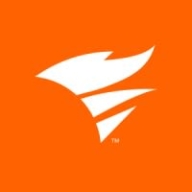

SolarWinds NPM and Loom Systems are competing in the network management and AIOps space. SolarWinds NPM has the upper hand in quick issue resolution due to its robust monitoring, whereas Loom Systems offers advanced predictive analytics for proactive operations.
Features: SolarWinds NPM provides network performance monitoring, real-time analytics, and customizable dashboards, aiding in network issue troubleshooting. Loom Systems offers predictive analytics, automatic incident detection, and correlation analysis, helping IT teams prevent service disruptions.
Room for Improvement: SolarWinds NPM can enhance its predictive capabilities, integrate AI-driven insights, and expand its cloud compatibility. Loom Systems could benefit from more straightforward integration with existing network setups, enhanced real-time monitoring, and better visualization tools for non-technical users.
Ease of Deployment and Customer Service: SolarWinds NPM offers straightforward deployment with comprehensive documentation and strong community support. Loom Systems provides quick deployment with a cloud-native architecture and detailed support services, enhancing user experience.
Pricing and ROI: SolarWinds NPM involves moderate setup costs with high ROI for organizations needing comprehensive monitoring. Loom Systems may require a higher investment due to its sophisticated analytics but offers long-term ROI through resource optimization and reduced downtime.
| Product | Market Share (%) |
|---|---|
| SolarWinds NPM | 3.9% |
| Loom Systems | 0.3% |
| Other | 95.8% |


| Company Size | Count |
|---|---|
| Small Business | 59 |
| Midsize Enterprise | 33 |
| Large Enterprise | 84 |
SolarWinds NPM is a network monitoring solution that enables you to detect, diagnose, and resolve network performance issues and outages quickly and efficiently. The solution is a powerful tool that can help you increase service levels, reduce downtime with multi vendor network monitoring, simplify the management of complex network devices, improve operational efficiency, and much more.
SolarWinds NPM Features
SolarWinds NPM has many valuable key features. Some of the most useful ones include:
SolarWinds NPM Benefits
There are several benefits to implementing SolarWinds NPM. Some of the biggest advantages the solution offers include:
Reviews from Real Users
Below are some reviews and helpful feedback written by PeerSpot users currently using the SolarWinds NPM solution.
PeerSpot user Andrew N., Senior Network Engineer at Element Critical, says, “The "Performance Analyzer" feature is the solution's most valuable aspect. It's able to do the bounded graphs of all the interface stats, from errors to broadcasts and to current traffic. With a click of a button you're able to, in one interface, look at historical data for those items.” He also adds, “From the troubleshooting point of view, just having that peace of mind is great. And, The solution is extremely stable. We haven't had any issues in that regard. We haven't had issues with bugs, glitches, or crashes."
Daniel S., Systems and Data Warehouse Supervisor at MMSD, mentions, “The alerting and usage tracking is a valuable feature because it alerts us when we're getting near capacity on disk space, network utilization or processor utilization. It helps us manage our capacity and enables us to be proactive.”
A Senior Vice President and CIO at a financial services firm explains, “As we look to add more servers to our virtual environment and to understand the impact, the solution allows us to dig into the historical charts related to capacity planning. It also gives us visibility of spikes and allows us to track down the reasons for their occurrences. So too, it makes room for potential processes that have gotten hung or runaway and to know when it's time to reboot a server or service.”
Dinesh N., Digital Innovation at Bobcat Company, states, “The best part of the solution is the sharing display. It gives a general public ID wherein everyone can link to a public display. That's a good feature.”
Fazal A., Implementation & Support Specialist at 360Factors, comments, “We have configured multiple alerts for our network devices, including routers and switches, so that we are notified if any interface goes down. In the event an interface goes down, we have multiple reports that include availability monitoring, network uptime monitoring, and network downtime monitoring. These reports are on multiple schedules such as the end of the day, end of the last business day of the week, monthly, and quarterly. This gives us the ability to provide reports to our management and let them know the performance of our network.”
We monitor all IT Infrastructure Monitoring reviews to prevent fraudulent reviews and keep review quality high. We do not post reviews by company employees or direct competitors. We validate each review for authenticity via cross-reference with LinkedIn, and personal follow-up with the reviewer when necessary.